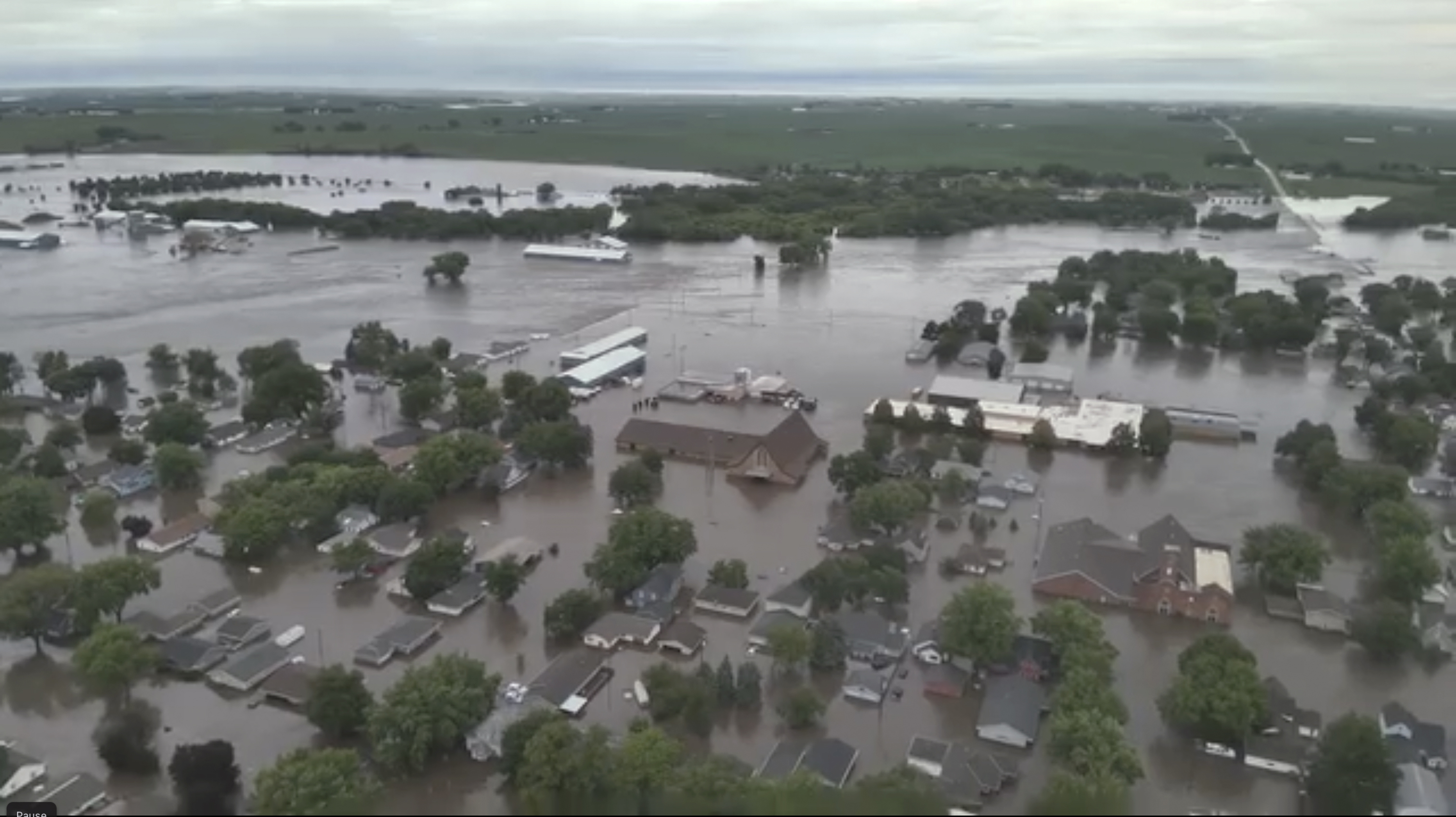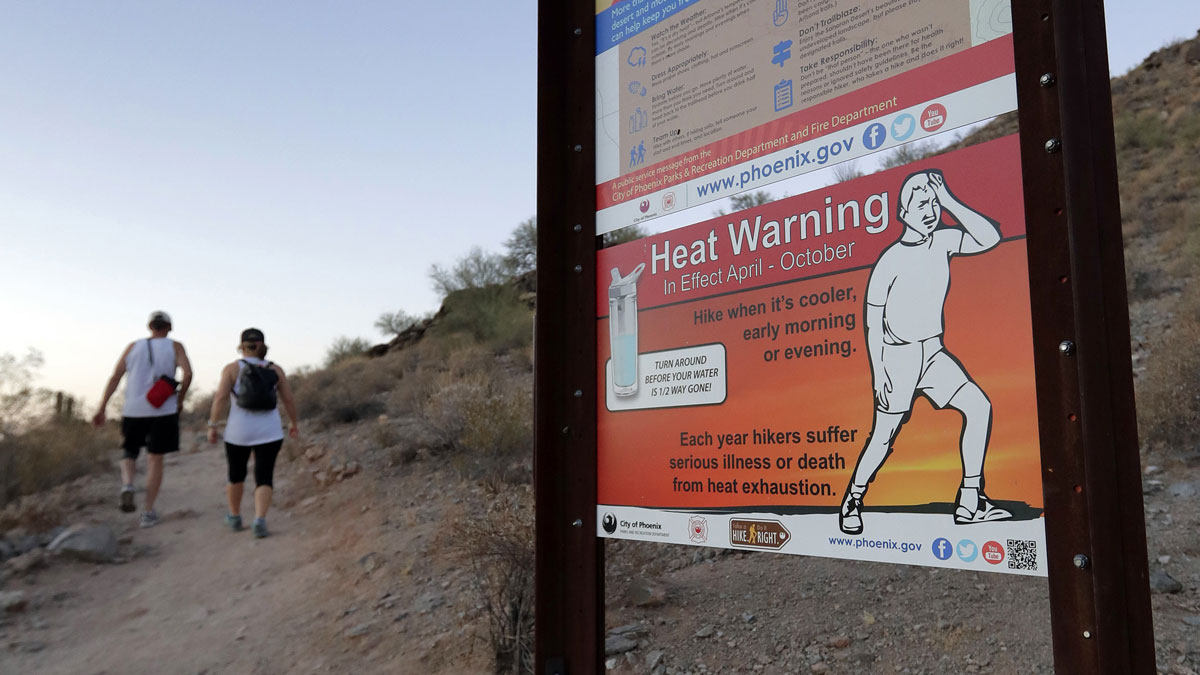
The nation's transportation system was built to withstand the weather, come rain or shine.
However, the heat dome scorching the U.S. has been pushing the nation's infrastructure to the limits. As millions of Americans face sweltering heat conditions, many have also been left stranded by disruptions in the nation's transportation systems that buckled under extreme temperatures.
Train speed restrictions and delays
In the Northeast, Amtrak and New Jersey Transit experienced severe delays as the heat wave placed pressure on electrical systems and trains, leaving tens of thousands of commuters stranded.
Get top local stories in Southern California delivered to you every morning. >Sign up for NBC LA's News Headlines newsletter.
Both providers are crucial to the region's transportation network. New Jersey Transit is the largest state transit system in the country, transporting nearly one million people per day across its different services. Amtrak's Northeast Regional route alone serviced nearly 9.2 million customers in 2023.
Though rail service suspensions and delays were concentrated at New York's Penn Station hub, the subsequent disruptions spread far along the Northeast Corridor.
The two agencies pointed fingers at each other: New Jersey Transit reported that service to and from New York was suspended due to an Amtrak overhead wire problem, while Amtrak alerts said delays were caused by a disabled New Jersey Transit train at Penn Station.
Adding to the delays were speed restrictions. Amtrak warned on June 20 that trains may slow down to accommodate the higher temperatures. The Washington, D.C., Metro did the same.
"Trains move more slowly during the heat because the tracks are softer and the catenary wires are drooping," said Clinton Andrews, director of the Center for Urban Policy Research at Rutgers University.
Otherwise, accidents and derailments could occur. In 2022, a San Francisco-bound BART train partially derailed during a heat wave. Officials blamed the heat and a lack of speed restriction policies, which have since been implemented.
Higher temperatures also put a strain on aging signal infrastructure and electric grids, which are needed to cool trains and stations, according to Radley Horton, a professor at Columbia University's Climate School and a member of the New York City Panel on Climate Change.
"Transportation can't be thought about in isolation," Horton said. "People rely on multiple modes of transportation, transportation relies on electric grids ... [and] different transportation nodes rely on each other. If one piece of that module backs up, it can cascade in a way that overloads other parts of the system."
Roads bake and buckle
Extreme heat can also be hard on roads and cars. When temperatures reach triple digits, roadways can buckle, resulting in costly damage that disrupts travel and leads to unsafe road conditions
According to AAA, there is also a higher demand for emergency roadside assistance due to increased car breakdowns during heat waves: car batteries may corrode, tire pressure could falter and the engine may be too hot for fuel to circulate well.
A study by Recurrent found that electric vehicles can lose up to 30% of their drivable range in triple-digit weather. That's because the car's thermal management requires energy to stay cool. EV owners are advised not to let their car's fall to low levels of charge in the summer due to the risk of the battery discharging. In June, a toddler in Arizona was trapped in a Tesla after the car's battery died without warning, according to NBC affiliate KAIT.
Even with a working car, conditions on the road may prevent their use.
Portions of interstates — such as the I-15 in Utah and I-41 in Wisconsin — were shut down in June due to the extreme heat, which caused the roads to expand, warp and buckle. Both closures caused significant backups in nearby counties, according to local news outlets.
The Midwest has also been hit with devastating floods that have destroyed homes, roads and communities. A landslide caused by rapid snowmelt and soil saturation took out 10 miles of a Wyoming highway on June 13, crippling a major thoroughfare that many in the region depend on to get to work.
That road, Teton Pass, serves as the main access point between Idaho and Wyoming’s Jackson Hole valley. Because of the high cost of living in Jackson, many workers are forced to live across state lines in Idaho where housing is more affordable. The road closure means that people who work in Jackson must drive for an additional four to six hours a day to detour around the gap, according to NBC News, time that workers simply cannot afford.
A rail bridge connecting South Dakota and Iowa also collapsed into the Big Sioux River on June 24 from extreme flooding. The loss of the rail passage dealt a "devastating blow to this region" and state officials said it will likely be months before the Burlington Northern Santa Fe Railway line will operate again, according NBC affiliate KTIV.
“We have damaged roads. We have damaged bridges,” South Dakota Governor Kristi Noem said at a news briefing. “That will impact us for many, many months to come.”
While the link between extreme heat and heavy rain is influenced by many factors, heat is one of them, according to Horton.
"All things being equal, when we have really high temperatures — especially combined with really high humidity — that can set the stage for more intense rainstorms and violent weather," Horton said.
Planes shedding passengers and bumpier flights
Even in the air, the effects of the heat wave are inescapable.
“Airplanes love cold weather — that’s where they do their maximum performance,” said aerospace journalist and former commercial airline pilot Kathleen Bangs. “When the air gets hot, you have less air density. It’s harder for your lifting devices like your wing and tail to perform optimally … and it can be hard on your tires and brakes.”
These conditions make it much more difficult for a plane to take off, according to Horton. Planes will typically also require longer runways to reach the higher speed needed.
In order to make up for the lower air density and set runway lengths, Bangs said planes must then reduce the weight they are carrying, which can lead to passengers being bumped and flight delays.
Turbulence is also likely to worsen in the coming years. A 2023 study published in the journal Geophysical Research Letters found that further warming is strengthening the temperature differences that generate wind shear, which is when two huge air masses close to each other move at different speeds. The study found these types of clear-air turbulence has increased 55% between
In very rare cases, turbulence-related fatalities can occur. Last month, a Singapore Airlines flight hit severe turbulence over the Indian Ocean, leading to the death of 73-year-old British man and injuring dozens of passengers. Authorities said the man may have had a heart attack, though that hasn't been confirmed.
Transit workers left vulnerable
Rising temperatures are also taking a toll on transit workers, from rail maintenance staff to ground crews at airports who are exposed to "really life-threatening levels of heat," according to Andrews. And without them, trains and planes cannot operate.
Horton said there needs to be a transformative approach to adaptation when it comes to worker protections and conditions.
"Historically in some parts of the U.S., whether rightly or wrongly, there were not any heat preparedness plans," Horton said. "We need to reassess these things. People are conducting manual labor in the sun, sometimes having to wear heavy clothing. There are major health dangers, including potentially loss of life."
The Biden administration proposed a new rule Tuesday to address excessive heat in the workplace. If finalized, it would require employers to identify heat hazards, establish rest breaks and provide shade and water, among other guidelines.
The rule could become the first major federal safety standard of its kind, protecting an estimated 36 million U.S. workers.
'Our infrastructure was not built for the climate of the future'
The American Society of Civil Engineers rated America's infrastructure a C- overall, with a D- for transit, D+ for aviation and B for rail.
As 2024 continues to hit record heats, potentially notching itself as the warmest year on record, transit issues may only be exacerbated — and they may very well extend into the coming years.
"The results are screaming at us that heat waves are becoming more frequent, of longer duration ... and the intensity is becoming greater than what it's been in the past," Horton said. "It's a new normal ... [and it's] exceeding what even our models thought was possible."
Horton said infrastructure systems need to be prepared to face compound extreme events, such as back-to back heat waves with heavy rain or a heat wave that covers half of the U.S.
"Our infrastructure was not built for the climate of the future," he added. "A lot of our infrastructure, at this point, is also very old. Some of it is beyond its intended lifetime."
Andrews said the U.S. needs to adopt a more adaptable infrastructure planning process.
“Hot weather has imposed stresses: the sagging catenary wires, the buckled tracks, the train cars whose brakes and motors are overheating, and the workers who are calling in sick,” Andrews said. “But the proximal cause is the fact that we haven’t invested in spring-loaded catenaries that can take up the slack when the wire droops. The fact that we are riding 50-year old train cars. The fact that our signaling systems are only slowly being updated."
“Infrastructure systems need regular investment,” Andrews said. “Unfortunately, in much of the United States, we have not been doing that.”



